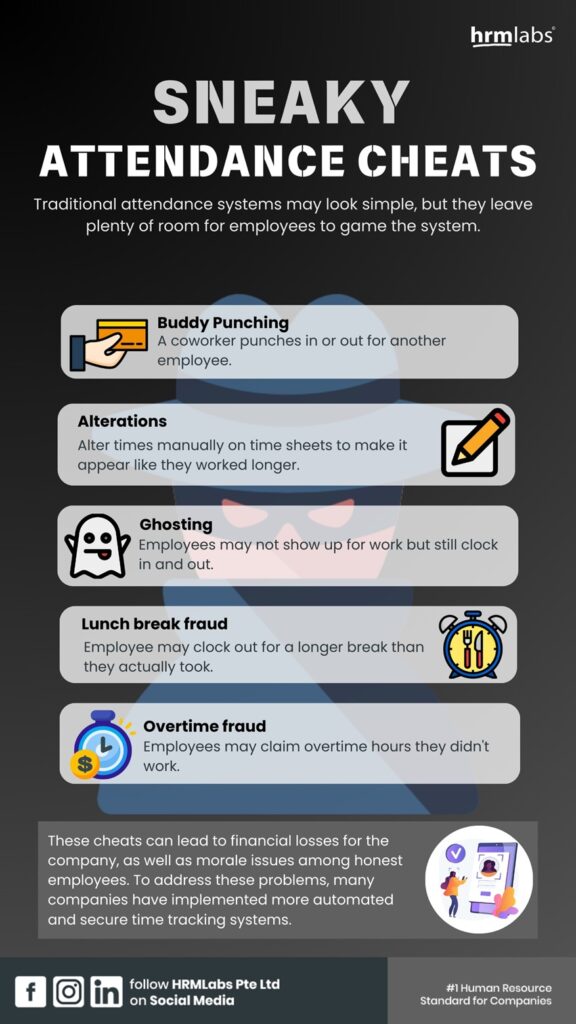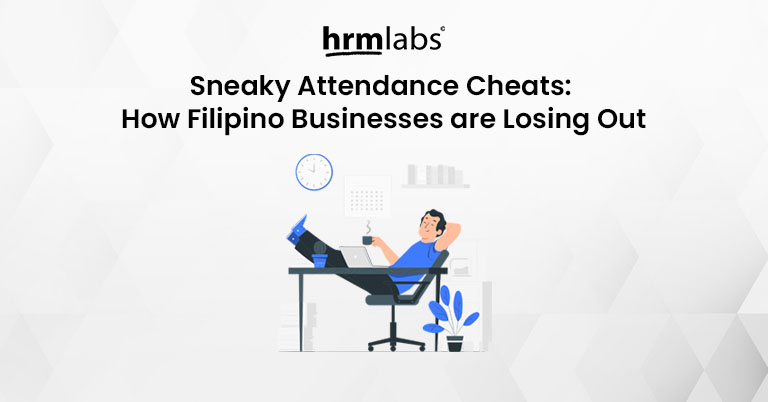Have you ever wondered how much productivity gets lost because of sneaky attendance cheats? As businesses across the Philippines transition to hybrid work setups or continue using traditional attendance methods, some employees find ways to exploit these systems. From having a buddy punch in for them to ghosting entire shifts, these practices might seem harmless at first but can quickly add up to massive losses for companies.
But don’t worry—there’s hope! With the rise of automated attendance solutions, it’s easier than ever to crack down on these practices and keep your business running smoothly.
Ready to dive into the sneaky world of attendance cheats and how to beat them? Let’s get started!
Buddy Punching: The Classic “Favor”
Imagine this scenario: You’re late to work because of traffic, and a work friend decides to clock in for you. This is buddy punching—a simple but effective way for employees to “cheat” the attendance system.
Did you know? Globally, it’s estimated that 75% of payroll losses due to time theft come from buddy punching. In the Philippines, where some companies still use outdated manual systems, buddy punching remains a common problem.
Solution: To combat this, many businesses are switching to biometric systems like fingerprint or facial recognition to ensure that only the employee can clock in. No more asking your friend to cover for you!
Ghosting: More Than Just a Dating Problem
Ghosting doesn’t just happen in relationships; it happens at work, too. Employees “clock in” without actually showing up for their shifts—either by manipulating the system remotely or with the help of a colleague.
Impact: Studies show that 1 in 5 companies globally have faced time theft through ghosting, especially in work-from-home setups.
Solution: A robust attendance system with GPS tracking can ensure that employees are clocking in from the right place and at the right time, even when working remotely.
Time Sheet Alterations: Small Changes, Big Losses
Some employees manually adjust their clock-in or clock-out times to make it look like they worked longer than they did. This small tweak can add up to big losses over time.
Statistic: Businesses lose an estimated 10% of productive hours annually due to time sheet alterations.
Solution: Automated time tracking systems can eliminate this issue by logging exact work times without any manual input.
Lunch Break Fraud: Extending Breaks Without Permission
Employees might clock out for a lunch break but return later than allowed, while still reporting the standard break time. This results in lost productivity for businesses.
Impact: If each employee takes just 10 extra minutes on their break each day, a company with 50 employees could lose over 200 hours of productivity a month!
Solution: Time tracking software that monitors break lengths ensures employees stick to the allocated times.
Overtime Fraud: Getting Paid for Hours Not Worked
Employees can claim overtime hours they didn’t actually work, adding unnecessary expenses to a company’s payroll.
Fact: In some industries, up to 20% of payroll errors come from overtime fraud.
Solution: Implementing automated attendance systems that cross-reference actual hours worked with overtime claims can easily solve this problem.
The Solution: Embrace Automated Attendance Systems
The good news is that businesses no longer have to rely on outdated attendance systems. Digital solutions such as HRMLabs offer mobile attendance, GPS tracking, and automated payroll integration to ensure accurate attendance records. By embracing these systems, Filipino businesses can significantly reduce time theft and improve overall workplace efficiency.

Final Thoughts
In the modern workplace, attendance fraud is not just a minor inconvenience—it’s a major drain on business resources. By switching to more secure, automated systems, companies can ensure accurate attendance tracking, reduce payroll losses, and create a more fair and productive environment for employees.
Say goodbye to attendance cheats and hello to a more efficient, secure, and honest way of tracking time.

